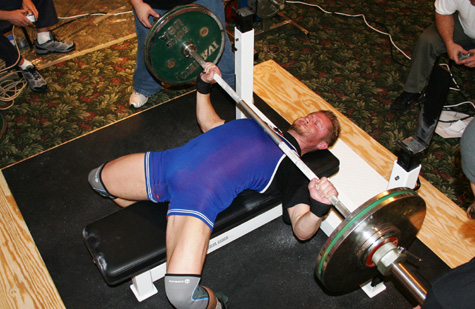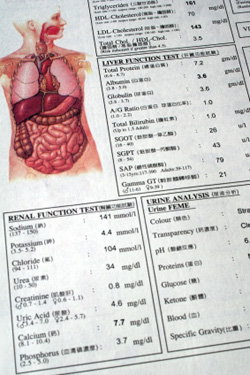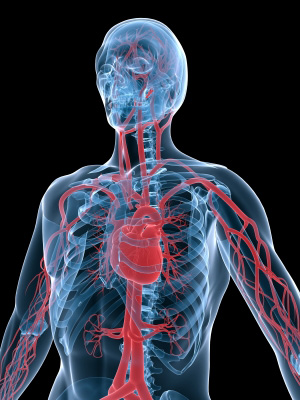|

Photo by SAS Digital Memories
I have been using nutrition as a successful weapon in such athletic endeavors as powerlifting, running, swimming, and spring triathlons, special operations military training, and then back to powerlifting. Has it made a difference for me? Unequivocally, yes. How? Primarily by increasing my ability to recover from and be prepared for the next workout. I can also say that the quality of life that I experience today is directly related to how well I took (and continue to take) care of myself nutritionally.
Is it easy?
It does take work, and it is an ongoing process. The foods that I currently eat are different from the foods that I was eating 6 months ago. Not entirely different, but the ratios (protein/carbs/fats) have changed, and I have changed some things that suit my metabolic rate and metabolic type for my current situation. Over the course of several articles, it is my objective to teach you the things that I have learned along the way, how to properly identify your metabolic type, and how you can apply these things to yourself and those around you. Some of this may sound a bit unconventional, hokey, new age, or just too troublesome. However, if you at least read what I have to say, I can assure you that you will take away at least one principle that you will apply for the rest of your life.

In order to achieve optimal health, we must first check and see how strong our foundation is. Just like any good workout template, we must first have the basics in place. I believe there are three indicators that you can use to accurately assess your own level of health. Yes, we have all heard of these factors before; but if I did not believe that they were important enough to call our "health foundation blocks" then I would not have included them. These three indicators are your insulin level, ideal blood pressure, and cholesterol level or cholesterol ratio. These three indicators can tell you so much about your own state of health, and how aggressively you need to change your dietary and exercise habits in order to maximize yourself in (training) and out (recovering) of the gym, and improve your quality of life.
Before we determine how we will go about testing insulin levels,
let's first discuss insulin.
The small intestine is responsible for separating glucose (sugar) from the dietary carbohydrates that we ingest. Once the glucose is free, it enters and is absorbed into the blood. Most adults have close to a gallon of blood in their bodies, and roughly only a teaspoon of sugar. If your blood sugar level were to rise to a tablespoon, you would go into a coma and certainly die. Our bodies work very hard to prohibit this from happening by producing appropriate amounts of insulin. Insulin acts on the cellular level in our bodies to stimulate the uptake, use, and storage of the glucose (sugar) that we just ate from the carbohydrates. This action keeps us from dying when we ingest sugar. However, high (inappropriate) levels of insulin are bad for us. Whenever we decide to eat grains and sugars, we end up increasing our insulin levels. Increased insulin levels can lead and help contribute to diabetes, high cholesterol, high blood pressure, and obesity. There are two types of diabetes: insulin dependent (type 1) and non-insulin dependent (2). This article is referencing the most common type, type 2. In type 2, the insulin receptors fail to respond the way that they should to the insulin that our bodies secrete from eating carbohydrates (sugar). Therefore, we continue to secrete more and more insulin. This is bad news.
The best way to find out our insulin levels is to request a fasting blood sugar test (FBS) from a doctor. It is a simple blood withdrawal after a fast of at least six hours. Personally, I prefer and recommend at least eight. It is a relatively inexpensive test that should not require much of your time. Normal levels for a fasting blood sugar test are around 87mg/dL, but anything below 90 is fine. Clinically, type 2 diabetes is not diagnosed until levels reach or exceed 126mg/dL, but you should be very concerned with anything at or slightly above 100mg/dL, regardless of what is considered "normal range". This is a direct indicator that you are becoming increasingly insulin resistant (your receptors are failing, as we discussed above) and that it is becoming harder and harder for your body to control your blood sugar. Blurred vision, excessive hunger, excessive thirst, excessive urination, and difficulty with would healing are all symptoms that may indicate that you are insulin resistant. Now do you see why controlling insulin levels are so important?

With the drug companies promoting statin drugs (lipitor, etc) more than ever, most people are confused about cholesterol.
Actually, cholesterol is a vital component of
every cell membrane on this planet.
Without cholesterol, there would be no life on earth. I would say that is important, wouldn't you? Cholesterol is also needed to make estrogen, testosterone, cortisone, and just about every other vital hormone you can think of. The majority of cholesterol in one's bloodstream is manufactured from the liver. The amount of dietary cholesterol has little to do with your cholesterol levels. Please read that statement again and repeat it out loud. The cholesterol that you are consuming in eggs has little to do with your cholesterol levels.
 When you go to get your cholesterol levels checked, the total cholesterol is measured and expressed in milligrams per deciliter of blood (mg/dL). HDL and LDL levels are also given. Currently, the most accurate predictor of cardiovascular health is not total cholesterol, but the ratio of HDL to total cholesterol. HDL has been referred to as "good cholesterol" and LDL "bad cholesterol". These are misnomers, as HDL stands for high-density lipoprotein, and LDL is low-density lipoprotein. Lipoproteins are proteins that are combined with fats. Therefore, there really are no such things as good and bad cholesterol. There is just cholesterol. However, all of these levels are important. When you go to get your cholesterol levels checked, the total cholesterol is measured and expressed in milligrams per deciliter of blood (mg/dL). HDL and LDL levels are also given. Currently, the most accurate predictor of cardiovascular health is not total cholesterol, but the ratio of HDL to total cholesterol. HDL has been referred to as "good cholesterol" and LDL "bad cholesterol". These are misnomers, as HDL stands for high-density lipoprotein, and LDL is low-density lipoprotein. Lipoproteins are proteins that are combined with fats. Therefore, there really are no such things as good and bad cholesterol. There is just cholesterol. However, all of these levels are important.
Simply put, the lower your LDL levels the better. More importantly, let's look at the ratio of HDL to total cholesterol that I mentioned above. On the "average", HDL levels for males should range from 40-50mg/dL. In women, the levels are 50-60mg/dL. It is important to note that progesterone and anabolics, specifically exogenous testosterone lower HDL levels. In order to determine your ratio, take your total cholesterol level and divide that by your HDL level. For example, if your total cholesterol level is 200mg/dL and your HDL level is 50, then 200 divided by 50 gives you a number of 4. The American Heart Association states that the goal is to keep this number below 5, but I believe that the cut-off point should be 4. The lower the number the better it is. There is a rare genetic condition (1 in 500) known as hypercholesterolemia where cholesterol levels are usually around 350 or higher. Obviously if this is the case for you, immediately contact an experienced natural health care clinician.
Finally, we need to look at blood pressure.
As our hearts pump blood, it is pushed through our arteries and against our arterial walls. Blood pressure is measured by cardiac output, or the force with which blood is pumped out of the left ventricle and the amount of resistance that is encountered. Blood pressure is expressed as two numbers.
For example, "normal" blood pressure is 120/80 mm Hg. The first number is systolic pressure, and it measures the pressure within the arteries when your heart beats. Systolic pressure increases steadily with age. Diastolic pressure measures the pressure in the arteries when the heart is at rest between beats and filling with blood. There are many different opinions on what is considered as optimum blood pressure. If I had to define it, I would say that it would be less than 120 over 80, but the take-home point is that it should be as low as possible. What is not disputable is that when taken accurately, elevated blood pressure makes the heart work harder, which leads to increasing its oxygen demands and a whole host of other problems that we simply do not want. It is interesting to note that I have been unable to find, and other prominent doctors in the field have pointed out, that not a single clinical trial has ever proven that lowering an elevated systolic blood pressure reduces the risk for death due to coronary disease. Why is this? Simply, the cause of high blood pressure cannot always be identified.
When a disease is treated, we first identify and then treat its cause. The problem with high blood pressure is that there seems to be many plausible causes. The high insulin levels that we discussed previously are one of the main factors that contribute to high blood pressure.
Insulin resistance can increase blood pressure by causing the kidneys to retain sodium. Stress, tension and anxiety, excess caffeine, diet, regular alcohol intake, carrying too much body fat (but how much is too much?), anabolic use, and fat burners (yohimbine, ephedrine, guarana, etc.) can contribute to the problem as well. It is my belief, however, that following a nutrition plan that is correct for you, such as metabolic typing (which we will discuss in the next article) will go a long way in lowering and controlling blood pressure. For most, this is going to mean eliminating grains and sugars.
Finding a way to manage stress that works for you is essential as well. For some, this may be praying, meditating, or listening to soothing music. I have some personal things that I do to manage stress that seem to work very well, but they are beyond the scope of this article. If you would like to know some of these techniques, I can provide you with the key words to search under so that you may do your own research, find your own conclusions, and apply what works for you. Finally, I believe that walking can do miracles for lowering blood pressure. I recommend working your way up to one hour of low impact exercise, such as walking, at least 3 times per week and preferably every day.
 When you go to get your blood pressure taken, it is recommended that you get at least two readings before you leave. These two readings should be divided by as much time as possible, and you should not take the first one until you have been sitting and relaxing for at least five minutes. It is very important to know that your arm position can directly impact your reading. Make sure your arm is perpendicular to your body and supported at the level of the heart. In other words, pretend like you are doing a phantom bench press at your desk, but only with one side. You do not want your arm hanging straight down or parallel. If this initial reading is high or not pleasing to you, have the next reading taken while lying on your back. After this reading is taken, go ahead and trouble the nurse or doctor again by requesting to have one more done standing to see if there are notable differences. If there are not, then you can assume that the readings are not influenced by your posture and are fairly accurate. If you are still reading high or are still displeased, go through the same drill a week or so later, only this time have all of the readings taken in the opposite arm as before. Now make a comparison and draw your own conclusions. It is safe to say that whichever arm is higher is the one that you should monitor.
When you go to get your blood pressure taken, it is recommended that you get at least two readings before you leave. These two readings should be divided by as much time as possible, and you should not take the first one until you have been sitting and relaxing for at least five minutes. It is very important to know that your arm position can directly impact your reading. Make sure your arm is perpendicular to your body and supported at the level of the heart. In other words, pretend like you are doing a phantom bench press at your desk, but only with one side. You do not want your arm hanging straight down or parallel. If this initial reading is high or not pleasing to you, have the next reading taken while lying on your back. After this reading is taken, go ahead and trouble the nurse or doctor again by requesting to have one more done standing to see if there are notable differences. If there are not, then you can assume that the readings are not influenced by your posture and are fairly accurate. If you are still reading high or are still displeased, go through the same drill a week or so later, only this time have all of the readings taken in the opposite arm as before. Now make a comparison and draw your own conclusions. It is safe to say that whichever arm is higher is the one that you should monitor.
Something that often gets overlooked in the powerlifting and weightlifting community is the fact that most have measurements that are larger than "average", especially in the arms. The width of the cuff should be about forty percent of the circumference (completely around) of the unflexed arm. For example, if you have 20-inch arms, then the width of the cuff should be around 8 inches. Yes, I want you to take a tape measure with you and check the cuff for yourself. If the cuff is considerably smaller than what your measurements call for, and they do not have any that are larger, then simply note this to yourself that this reading may be skewed.
If you believe that the readings you have taken are accurate and that they are high, then I suggest you buy a reliable automated electronic device to check your blood pressure at home. Make sure that the one you buy has the appropriate cuff for your arm. Many quality models will cost between fifty and one hundred dollars. If feasible, you should calibrate your machine against the one in your doctor's office. Testing at home allows you to check at various times of the day and rules out "white-coat" syndrome, or being anxious at the doctor's office. You can take as many readings as you would like, but four times per day should suffice.
Now that you are armed with the knowledge of what to do for an initial assessment of your health, I urge you to put the wheels in motion…today. After you have made your determination based on your tests, it is then time to take the next steps to improve upon these conditions. For some of you, the process will not be so urgent. For others, we will need to make some immediate changes. The most efficient and most effective way to do this is through proper diet. Trust me, when we discuss Metabolic Typing® you will be very interested to learn how one man's food can certainly be one man's poison. If you think broccoli is healthy for everybody across the board, then think again. Metabolic Typing® teaches you how to choose the foods that work best with your body and why. I do not want you thinking strictly in terms of protein, carbohydrates, and fats. That is seeing the forest before the trees. Metabolic Typing® will be a very fun, ongoing journey because it is a self-discovery process. Once you discover how to apply Metabolic Typing, everything changes. You will look and feel better, enjoy better health, and you will be stronger in the gym than ever. Stay tuned…
Questions about this article can be directed to me at the Critical Bench Muscle Forum

Return To Eric Talmant's Author Page
Follow Eric's Training Log
More Nutrition Articles
|